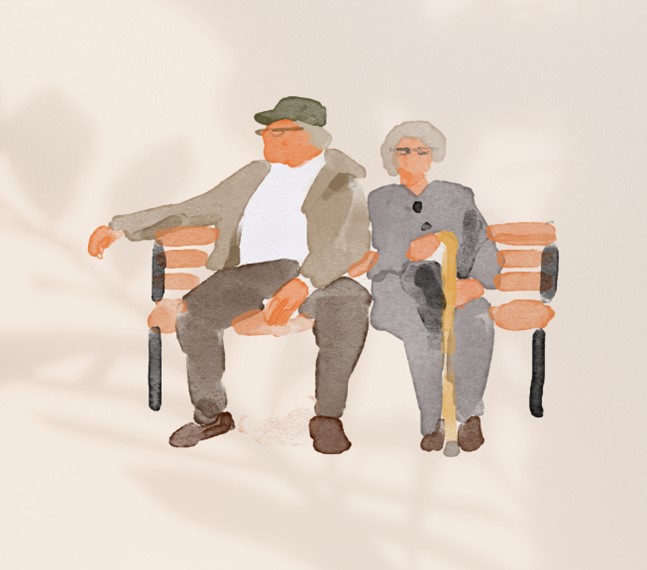
This week’s article focuses on ageing population and it will analyse the situation in Japan compared to the Netherlands.
The global shift toward an increasingly elderly demographic is a transformative trend that is already influencing government policies and impacting societies and economies worldwide. In the case of Japan, the implications of this shift are noteworthy. In 2020, the International Monetary Fund foresaw challenges for Japan’s public finances due to the aging and diminishing population. The prediction highlighted the strain on public resources as spending on age-related needs, such as healthcare and pensions, rises while the tax base diminishes.
Nevertheless, Prime Minister Fumio Kishida acknowledged in January 2023 that Japan stands at a critical juncture, grappling with the dual threats of declining birth rates and an escalating elderly population. A labour shortage is already evident, with a projection indicating a potential shortfall of 11 million workers by 2040. To address this, Japan introduced the Guideline of Measures for an Aging Society in 2018, aiming to encourage older individuals to stay active in the workforce. The guidelines are to be applied through medium term actions, as following:
1. Employment and Income: Foster an inclusive work environment, allowing individuals of all ages to participate in the workforce; ensure the stable operation of a public pension system; facilitate asset formation.
2. Health and Welfare: Holistically advance health initiatives; ensure the sustainable functioning of the long-term care (LTC) insurance system; enhance LTC services to prevent individuals from being compelled to leave their jobs for long-term care; sustainably manage the medical care system for older individuals; implement measures to support those with dementia; improve end-of-life medical care; establish frameworks to support local communities, primarily driven by residents.
3. Learning and Social Participation: Encourage learning activities; foster social participation.
4. Living Environment: Guarantee a secure and fulfilling housing life; promote comprehensive town development tailored to an aging society; ensure traffic safety and protection from crime and natural disasters; advocate for the adult guardianship system.
5. Research Development and Contribution to the World: Harness advanced technology to invigorate the market for older individuals; promote research and development, along with infrastructure enhancement; share knowledge and challenges with foreign countries.
6. Promote Success of All Generations: Advocate for initiatives that enable active participation of individuals from all generations in society, emphasizing their unique roles in an aging society.
In 2022, nearly half of Japanese companies relied on workers over the age of 70, a notable contrast to the global scenario where only 35% of companies prioritize workers aged over 55, according to the World Economic Forum’s Future of Jobs Report 2023. Prime Minister Kishida allocated $7.6 billion to train workers for high-skilled jobs, recognizing the importance of technology and digitalization in the evolving job landscape. However, experts suggest that without relaxing strict immigration laws, addressing the labour gap will be a gradual process.
Japan’s birth rate reached a record low in 2022, with a fertility rate of 1.2565, significantly below the 2.07 rate considered necessary for maintaining a stable population. The pandemic exacerbated demographic challenges in Japan, leading to more deaths, fewer marriages, and diminished birth rates.
The looming demographic shift poses a significant challenge to Japan’s social security system, strained by the financial burden of supporting a retired population with fewer contributing workers. As Japan’s population ages, healthcare becomes a critical focal point. The government has initiated strategies such as promoting home-based care, encouraging patient-requested care, self-medication, and remote monitoring of patients in their residences.
While carebots designed to assist the elderly have been tested for several years, the automation of care has not proven to be the remedy Japan had hoped for.
On the other side of the world, as of January 1, 2023, the Netherlands counted 3,601,167 residents aged 65 and above, comprising 20.2 percent of the total population. The aging of the population in the Netherlands has witnessed an increase, considering that in 1990, only 12.8 percent of residents were aged 65 or older. On average, women tend to live longer than men, resulting in their overrepresentation in the highest age brackets. For instance, there are 95,090 women and 40,128 men aged 90 and older. With the growing demand for home care services, the elderly are likely to become even more reliant on informal care.
In 2016, 10 percent of individuals aged 65 and above reported receiving informal care, as formalized home care services faced escalating demand. The percentage varied regionally, ranging from 8 percent in Friesland province to 11 percent in Noord-Brabant, Limburg, Drenthe, and Flevoland. This encompasses all forms of informal care, irrespective of the nature of the activity or the number of hours involved. Informal care may be provided by a partner, children, friends, or neighbours. However, compared to other European countries, the Netherlands is still not generally affected by a high number of an aging population. Nonetheless, the average number of elderly has an ascending tendency and it is forecasted that by 2025 the population that is more than 80 years old in rich and EU countries is set to double the current numbers. Therefore, among the other EU countries, the Netherlands should also start paying attention to healthcare schemes and elderly oriented programs. As precautions, the EU countries including the Netherlands could follow the example of Japan and start introducing different guidelines for elderly to stay active in the workforce to avoid a considerable labour shortage.
References
Osamu, S. (2021, February). Measures to Address Japan’s Aging Society. Retrieved from Public Relations Office Government of Japan: https://www.gov-online.go.jp/eng/publicity/book/hlj/html/202102/202102_09_en.html
Statistics Netherlands . (2020, May 29). What is the living situation of the elderly in the Netherlands? Retrieved from Statistics Netherlands : https://www.cbs.nl/en-gb/background/2020/19/what-is-the-living-situation-of-the-elderly-in-the-netherlands-
Statistics Netherlands . (2023). Elderly people. Retrieved from Statistics Netherlands : https://www.cbs.nl/en-gb/visualisations/dashboard-population/age/elderly-people
World Economic Forum . (2021, October 26). The EU is ageing and in need of care – here’s what that means for its economic future. Retrieved from World Economic Forum : https://www.weforum.org/agenda/2021/10/eu-ageing-society-care-cost/
World Economic Forum . (2023, September 28). More than 1 in 10 people in Japan are aged 80 or over. Here’s how its ageing population is reshaping the country. Retrieved from World Economic Forum : https://www.weforum.org/agenda/2023/09/elderly-oldest-population-world-japan/
